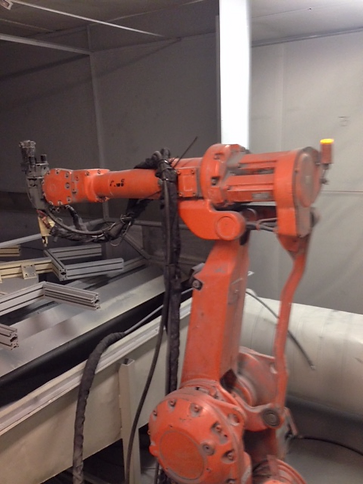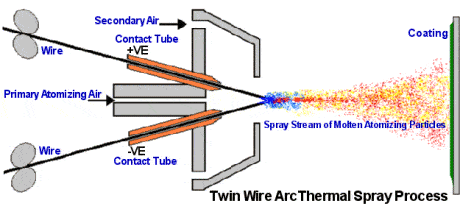Twin Wire Arc Process
The arc spray process gives uniquely high bond strength and exceptional high performance coating, which exceed the performance of many previsouly availble coating processes such as gas wire and gas powder. With this is mind, many times the arc coating will work where the coating by other processes will not.
The Arc Spray Process utilizes a pair of electrically conductive wires, which are melted by means of an electric arc. The molten material is then atomized by compressed air and propelled onto a substrate surface. The impacting molten particles rapidly solidify on the substrate to form a coating. This process is referred to as cold process (relative to the substrate material being coated) as the substrate temperature can be kept low during processing avoiding damage, metallurgical changes and distortion to the substrate material.
The main applications are anti-corrosion coatings of zinc and aluminum and machine element work on large components. Properties vary based on substrate, spray environment and parameters used. Estimated costs of the application of the arc spray coating on the number of parts to be sprayed, their complexity, and siz.
Advantages and Disadvantages to Twin Wire Arc

Advantages and Disadvantages to Twin Wire Arc
- Denser and stronger than equivalent combustion spray coatings.
- Large areas are easily coated due to high spray rates.
- Efficient and economical for high production rates.
Disadvantages of Twin Wire Arc
- Only electrically conductive wires can be sprayed.
- Separate heating source required when substrate pre-heating is required.




